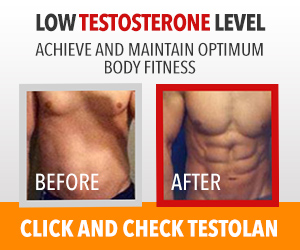This site contains product affiliate links. We may receive a commission if you make a purchase after clicking on one of these links.
Have you ever wondered about the intricacies of testosterone levels and how they relate to your age? An esteemed urologist and pelvic surgeon, is here to unravel the mysteries surrounding testosterone optimization. In this comprehensive blog post, we will delve deep into the fascinating realm of testosterone, exploring the diagnostic criteria, the fluctuations in levels throughout the day, the impact of age on testosterone production, and the symptoms of low testosterone. Prepare to embark on a knowledge-packed journey that will empower you to optimize your testosterone levels and improve your overall well-being.
Understanding Testosterone Levels and Diagnosis
Defining Low Testosterone
Let’s start by understanding what constitutes low testosterone. According to the American Urological Association, testosterone levels below 300 nanograms per deciliter are generally considered low. However, to officially diagnose low testosterone, healthcare professionals require two serum total testosterone measurements in the early morning. Why the emphasis on early morning testing? Research has shown that testosterone levels among men with traditional sleep patterns reach their peak between 3 and 8 AM. Throughout the day, these levels experience a significant decline, with measurements at 4 PM for men aged 30 to 40 being approximately 20 to 25 percent lower than those taken at 8 AM.
The Significance of Multiple Measurements
Why is it necessary to take two testosterone measurements? The answer lies in the substantial variability of testosterone levels, even within an individual. Surprisingly, repeat testosterone levels can vary between 65 and 153 percent between tests. However, when two measurements are taken, this variability reduces to a range of 30 to 43 percent. By relying on multiple measurements, healthcare professionals can obtain a more accurate understanding of an individual’s testosterone levels and make well-informed decisions regarding treatment options.
Unraveling the Complexity of Cutoff Values
Determining the appropriate cutoff value for low testosterone is a complex task. The value of 300 nanograms per deciliter as a cutoff for low testosterone was derived from testosterone replacement trials conducted in men above the age of 45. However, it’s crucial to acknowledge that testosterone levels naturally decline with age, and the cutoffs for low testosterone can vary depending on the society. While the American Urological Association suggests a cutoff of 300, other societies set the bar as low as 200 or as high as 350 nanograms per deciliter. These variations highlight the ongoing debate surrounding testosterone optimization and the need for tailored approaches based on individual characteristics.


Recognizing the Symptoms of Low Testosterone
Now that we have a better understanding of testosterone levels and diagnosis, let’s explore the symptoms associated with low testosterone. It’s essential to recognize these symptoms to identify potential imbalances and seek appropriate medical guidance. Some common symptoms of low testosterone include:
- Fatigue: Feeling constantly tired, lacking energy, and experiencing a general sense of weariness.
- Low Sex Drive: A decrease in sexual desire or libido, resulting in a diminished interest in sexual activities.
- Erectile Difficulties: Trouble achieving or maintaining erections, which can impact sexual performance and satisfaction.
- Reduced Muscle Mass: Noticing a decline in muscle strength, size, and overall muscle mass.
- Physical Changes: Experiencing the loss of armpit or pubic hair, observing smaller testicles, or even encountering hot flashes.
- Psychological Effects: Some men may encounter symptoms such as depression, difficulty concentrating or memory problems, and even an enlargement of breast tissue.
These symptoms can significantly impact a person’s overall well-being, self-confidence, and quality of life. Recognizing them is the first step towards addressing potential testosterone imbalances and seeking appropriate medical interventions.
Research Insights: Age-Specific Testosterone Levels
To shed more light on the topic of testosterone optimization, a group of researchers conducted a study utilizing data from the National Health and Nutrition Examination Survey (NHANES). This survey collects information from a diverse sample of individuals across the United States, making it representative of the national demographics. The researchers focused specifically on men between the ages of 20 and 44, analyzing their early morning testosterone levels between 6 AM and 10 AM.
Unveiling Age-Related Patterns
The study’s findings revealed intriguing patterns regarding age-specific testosterone levels. Among the 1,500 men included in the analysis, with an average age of 32, testosterone levels were highest in the 25-29 age group, with an average of 514 nanograms per deciliter. On the other hand, the 40-44 age group exhibited the lowest levels, with an average of 430 nanograms per deciliter. Furthermore, the research unveiled a consistent decline in testosterone levels with each passing year, averaging a decrease of 4.3 nanograms per deciliter.
Establishing Age-Specific Cutoffs for Low Testosterone
Building upon these findings, the researchers sought to establish age-specific cutoff values for low testosterone. Following the approach of the American Urological Association’s guidelines, which divide men into tertiles based on testosterone levels, the researchers applied a similar methodology to their dataset. Through meticulous analysis, they determined age-specific cutoff values for low testosterone:
- 20-24 years old: 409 nanograms per deciliter
- 25-29 years old: 413 nanograms per deciliter
- 30-34 years old: 359 nanograms per deciliter
- 35-39 years old: 352 nanograms per deciliter
- 40-44 years old: 350 nanograms per deciliter
These cutoff values provide a starting point for discussions regarding what is considered normal within each age group. However, it’s essential to recognize the limitations of this study.
Understanding the Study’s Limitations and Seeking Professional Guidance
While the study utilizing NHANES data offers valuable insights, it has certain limitations that should be acknowledged. One significant constraint is the absence of symptom assessment among the participants. Without assessing the presence of low testosterone symptoms, it’s challenging to determine whether the men included in the study actually had low testosterone levels. Considering the sample’s representativeness of the United States population, it’s reasonable to assume that individuals with low testosterone were present. Consequently, this might indicate the need for higher cutoff values if only men without low testosterone symptoms were considered.
Furthermore, the study relied on a single serum testosterone measurement from the NHANES database. However, research suggests that approximately 30 to 34 percent of men with abnormal testosterone levels will exhibit normal levels upon retesting within the next 24 hours. Ideally, both measurements should be obtained to obtain a more accurate understanding of an individual’s testosterone levels.
Given these limitations, it’s vital to emphasize the importance of seeking professional medical advice if you suspect low testosterone or experience associated symptoms. Consulting with a healthcare professional, such as a urologist, endocrinologist, or primary care physician, is essential for a comprehensive evaluation and personalized guidance. Treatment options for low testosterone can extend beyond testosterone replacement therapy, with alternative approaches tailored to individual needs and circumstances.
Empowering Yourself for Optimal Testosterone Levels
Optimizing testosterone levels is crucial for overall health and well-being, particularly as it relates to age. While the study discussed in this blog post provides valuable insights into age-specific testosterone levels, it’s essential to acknowledge the ongoing debates and variations in cutoff values among different societies. To
determine whether your testosterone levels are optimized for your age, consider consulting a healthcare professional who can evaluate your symptoms, perform appropriate tests, and guide you toward the most suitable interventions.
Remember, recognizing the symptoms of low testosterone is a crucial first step in taking control of your health. By empowering yourself with knowledge and seeking professional guidance, you can embark on a journey towards testosterone optimization, leading to improved energy levels, sexual health, physical performance, and overall quality of life.
So, embrace the opportunity to explore your testosterone levels, unlock your potential, and thrive with optimized testosterone levels for your age. You deserve it!
NHANES: National Health and Nutrition Examination Survey
FAQs about Testosterone Optimization
What are the symptoms of low testosterone?
Symptoms of low testosterone may include fatigue, low sex drive, difficulty with erections, reduced muscle mass, physical changes such as hair loss or smaller testicles, psychological effects like depression or memory problems, and even breast tissue enlargement.
How is low testosterone diagnosed?
To diagnose low testosterone, healthcare professionals typically require two serum total testosterone measurements in the early morning when testosterone levels are at their peak. This helps account for the significant variability in testosterone levels throughout the day.
What is considered a low testosterone level?
The American Urological Association defines low testosterone as levels below 300 nanograms per deciliter. However, cutoff values can vary between societies, with some setting the bar as low as 200 or as high as 350 nanograms per deciliter.
How does age affect testosterone levels?
Testosterone levels naturally decline with age. Research shows that for every year a man ages, there is an average decrease of 4.3 nanograms per deciliter in testosterone levels. Understanding age-related patterns is crucial in evaluating and optimizing testosterone levels.
How can I optimize my testosterone levels?
If you suspect low testosterone or experience associated symptoms, it is essential to consult with a healthcare professional such as a urologist, endocrinologist, or primary care physician. They can evaluate your symptoms, perform appropriate tests, and guide you toward the most suitable interventions tailored to your individual needs and circumstances. Treatment options may extend beyond testosterone replacement therapy, focusing on lifestyle modifications, nutritional changes, exercise, and other personalized approaches.
For further reading on how to boost your testosterone naturally, checkout our article on How To Boost Your Testosterone Naturally: Tips From A Urologist









